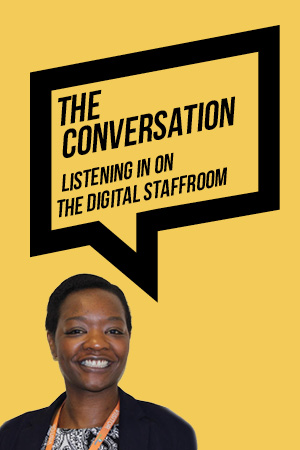Publisher
R&L
ISBN 10
In my 16 years of teaching I have never had the urge to explore oracy in detail because I didn’t really see why teaching speaking skills was necessary. Amy Gaunt and Alice Stott’s manifesto for teaching speaking skills has changed all that.
People wrongly assume that children pick up oracy as they go along, but evidence of the language development gap between children experiencing deprivation and those who don’t shows that not all of them do.
The book gave me pause for reflection; I have taught in the post-16 sector for several years and students joining us for sixth form exhibit a broad range of linguistic competence and confidence. I have set up debates and discussions to help my 17 and 18-year-olds explore complex issues (I teach A-level geography), but I used these activities as mostly “fun” precursors to a written task. I realise now that I may have done my students a disservice. I always expected them to be able to engage in discussions at the drop of a hat and had not bothered to teach them how to discuss: how to take turns; challenge opinions; build on ideas; listen actively.
Gaunt and Stott helped me to understand what oracy involves, why teaching young people to express themselves well is so important, and why I should give it a try in my lessons.
As I read on, I found myself jotting down lesson ideas, such as running a group discussion on social inequality with my year 12s to give students an opportunity to articulate their views through speech rather than writing.
The book gave me pause for reflection
Written sequentially to help you to plan, teach and assess oracy in the classroom, the book is full of straightforward, practical activities to use from early years to sixth form. I particularly liked the chapters that explained ways in which oracy can support vocabulary acquisition. If set up carefully, discussions give students the chance to practise new words and embed them in their own lexicon. The book suggests examples of sentence stems that students can use when taking part in small group discussions to help structure their contributions. As the authors rightly say, we model, make writing frames and write sentence openers for written work, why shouldn’t we do the same for oral work?
Chapters promoting active listening include some really good ideas on how to teach summarising and paraphrasing skills, and how to support the more introverted or shy students to take part in group discussions. I’m never sure how to divide the class for discussions: should I put all the dominant students together or mix them up? Gaunt and Stott offer some creative suggestions to teach the more vocal and confident how to listen and how to allow the space to enable others to contribute confidently and meaningfully.
The “talk detectives” idea, in which two or three students circulate the classroom listening in on group discussions and then feeding back, will need some rebranding for my 17-year-olds, but I can see it working as long as I structure the activity properly and explain the rationale behind it.
Debating and presentations are also discussed at length. I have tried both many times with little success. So I was buoyed by the useful practical advice on how to do them well.
My first attempt at applying the book’s guidance – a group discussion on social inequality – wasn’t bad. Several students used the sentence stems I provided and the quieter members of the class had the chance to explore the topic away from “derailers”, students who go off topic quickly. The activities will need a bit of refining, but for me this was a positive first step in oracy.













There is nothing new here, which is certainly not a criticism. It is mainstream Piaget/Vygotsky learning theory as found in the ‘Cognitive Acceleration’ and P4C movements. See
https://rogertitcombelearningmatters.wordpress.com/2018/10/09/p4c-primary-case-secondary-raised-attainment-for-all/